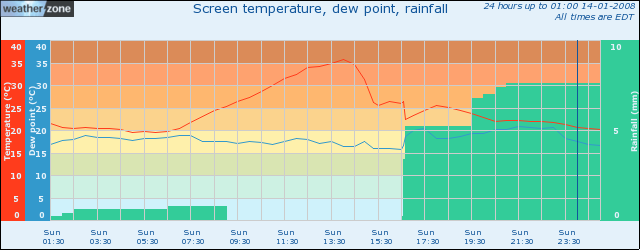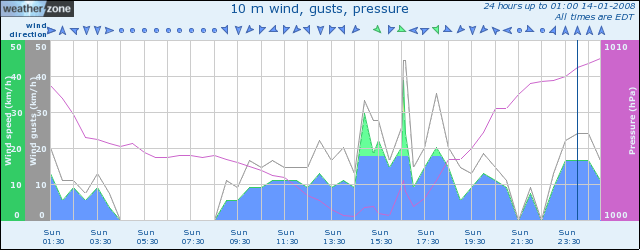Flying Training
Lesson 55: Training Area
Sunday 13 January 2008, 6.30am in Citabria VH-RRW.
Weather: Beautiful. 20°C; DP 18°C; wind calm, no cloud below 12,000 (except over the reservoir)
One of my New Year's resolutions was to stay current on the Citabria, which at Curtis Aviation (for insurance reasons) means less than 30 days between flights. The next day was the beginning of a two-week trip up north, so you see I really had no choice but to go flying today...
As you can see, the weather conditions were beautiful. It would have been a perfect day for a passenger, although it got a bit exciting later on.
As the dewpoint was within a couple of degrees of the temperature I raised the question with Rob as to whether to use carby heat on the ground. He confirmed that pilots have had carby ice issues on the ground, and suggested that I just leave carby heat on for a good 30 seconds during the run-up. I also questioned Darren on the arrival procedure in CTAF conditions - whether to overfly the airfield or join the circuit on downwind. He said just make a normal inbound call, then overfly at 1800 feet, fly to the right of the runway, eyeball the windsock, turn crosswind then left for 06 or right for 24.
Ready to go now, I started up, then found during the after start checks that I didn't have a headset. How embarrassing. Even more embarrassing was when I attempted to start up after collecting the headset, found the engine wouldn't run and couldn't figure out why. Steve came over to help. I had the mixture full lean. Aargh. He suggested I pull the checklist out. I did have it out but took it up from the point after the mixture.
These little issues sorted out, the flight went well. I took off nice and straight (there was no crosswind, or any other wind for that matter). Turning crosswind, I levelled out at 1300 and headed left towards The Oaks. As I tuned to Sydney Radio I remembered the transponder. I climbed to 4500 feet, took in the view to the west, then carried out the HASELL checks (hitting my own slipstream in the 360° turn) and ran through a couple of full stalls. Didn't drop more than 100 feet.
Then I flew north, still at 4500 feet, to Warragamba dam, followed the pipeline and practiced a forced landing above the strip at St Marys (the twin-engined Cessna is still there). This got me down to 1500 feet, and I climbed back up to 1800' before making an inbound call at Bringelly. Obviously 06 was still in use so I descended to circuit height, joined downwind and did a touch and go.
I was still too high on final (turned base a little early) so sideslipped to lose height. Decent landing. Round again. Followed a Cessna ("Camden traffic, Citabria RRW turning downwind for 06. Traffic sighted.") and turned base a little later than before. This made for a much nicer approach and touch down.
I called clear of active runways, turned off transponder and parked neatly. The next student on RRW was a 12-year old boy! Craig took him on a very thorough preflight, eg check compression on all 4 cylinders, check screws on spinner, look for brake fluid leaks (red) etc.
The flight was 0.9 hours in total. I'm now up to 57.7 hours total flying time and 9.6 PIC. Having done 3.3 consecutive solo hours so I have another couple of flights before I need a check flight (Curtis requires a check flight every 5 hours for students [no they don't]. Does it have to be on the same type, I wonder?)
Photos
 Curtis fleet |
 Climbing |
 Climbing |
 Camden |
 Lake Burragorang |
 The Oaks |
 Lake Burragorang |
 Lake Burragorang |
 Cruising |
 Warragamba |
 Warragamba |
 Looking east |
 Warragamba |
 Back on the ground |
 Preflight |
 Twin |
 Hail |
Weather


